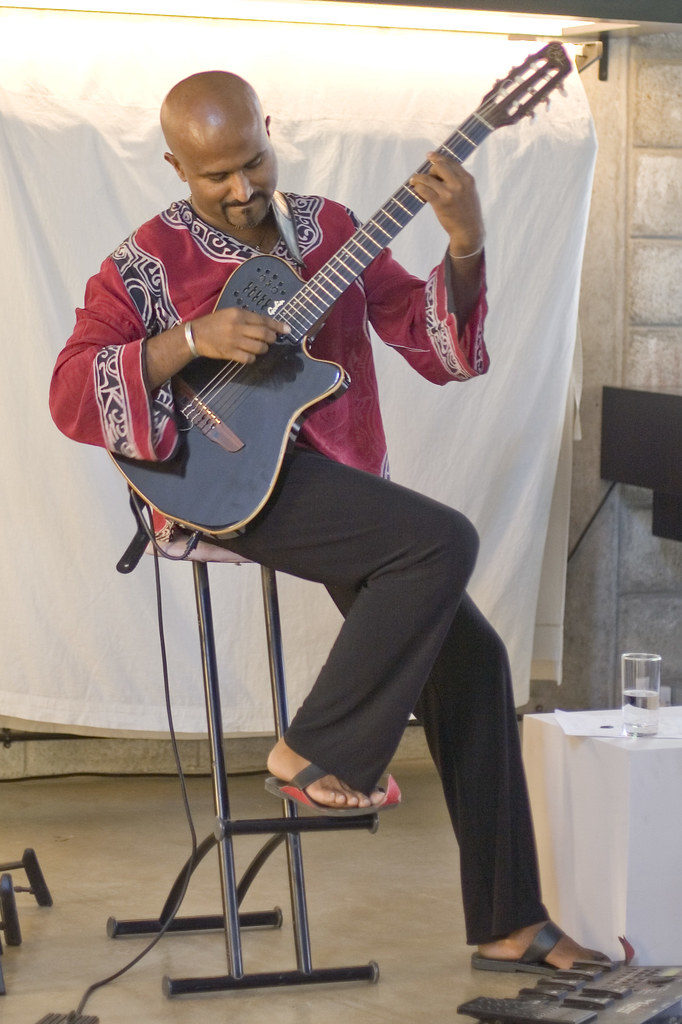Posts Tagged ‘Jazz and Rock Guitar Technique’
Excerpt – An Alexander Technique Approach to Jazz and Rock Guitar Technique (Electric)(Musicians)(Psychology)(Pain)(Strain)(Injuries)(Posture)(Albuquerque)
This ebook, An Alexander Technique Approach to Jazz and Rock Guitar Technique, is published on this website in a PDF format. It is very detailed and practical, and it will give you the physical tools you need to take the limits off of your ability to create the accurate guitar technique you want without sacrificing your body.
This ebook is also for sale on all AMAZON websites in a KINDLE format.
Located in Albuquerque, New Mexico, U.S.A. (MOVEMENT THERAPY)
Now, let’s look at standing. Stand in profile to a mirror. Lock your knees, which is locking your thighs. Now, unlock your thighs without bending your knees. This is unlocked knees without bending your knees. Bending your knees makes your thighs work more than they need to. Notice if you’re tensing your ankles or your calves and release this holding. You will feel very unstable, but allow it, because it is a necessary part of finding balance.
Now, push your hips forward and look in the mirror. It should be very clear to you that your hips are in front of your upper body, and that your upper legs are being pushed in front of your ankles. Now, pivot forward from your hip joints, and your buttocks will stick out, as your upper body leans forward. Observe these extremes in the mirror. There is a place in-between these two extremes, where the hips are under the upper back and the ankles are free, because the hips aren’t being pushed forward.
Let the mirror show you what you’re doing, checking that you’re truly doing what you’re feeling. Probably you aren’t, so trust the mirror and not your kinesthetic sense at this point. Your kinesthetic sense is your ability to know where the different parts of your body are in relationship to each other. You will feel what is really happening posturally in a short period of time, if you trust your eyes to help you find balance and alignment, rather than your kinesthetic sense. (Your kinesthetic sense is temporarily debauched, as F. M. Alexander would have called it.)
As you continue to stand, place the strap and guitar on your left shoulder and hands in playing position, but don’t position the instrument to play. Now, release your neck and let the head lead a lengthening spine up. Glance in the mirror, and see if you are doing what you think you are doing. You want the head to lead a neck that is curving back and lengthening up, which is leading a torso supported by the pelvis on unlocked legs and ankles, on feet fully grounded on the floor. Now tilt the head of the guitar upwards, and it should be at about neck height.
Notice if you collapse your upper back or neck forwards to reach the guitar and let go of “reaching” for the guitar with your head. Notice if you sacrifice any of your new alignment in supporting the guitar with your shoulder, as your arms are on the instrument. Do you want to lean backwards and to the right or left from your lower back to compensate for the forwards and sideways asymmetric position of the guitar? Choose not to.
This is a very different place for a guitar player to be; by placing your attention fully on what you’re doing posturally rather than on playing. To stand as if you’re going to play and not play, and to place your awareness on only what’s going on in your body, rather than focusing on playing and how it sounds, is very Alexandrian, is inhibition.
It is putting all of your awareness on the means rather than the ends. The ends is the music that comes out of the guitar, and the means is how you create the music with your technique.
